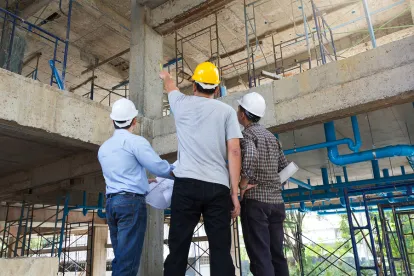I’ve now been in Dubai for 9 weeks since relocating from Bracewell’s London office. In the construction industry here, there’s one thing to the forefront of everyone’s minds: price. That’s always been the way of course, in the UAE or any other jurisdiction. But the low oil price era and other pricing pressures mean that participants in the sector are feeling the squeeze like never before.
One consultant said to me this week that there are always opportunities for good companies and good people. That’s true to an extent. However, with major construction players such as Balfour Beatty having pulled out of the region, the industry should not be complacent.
In this article, I consider some the challenges arising from this low price environment and some of the strategies which developers, contractors and consultants can use to help them turn a profit.
Buy cheap, buy twice
John Ruskin was an English writer of the Victorian era. He said that ‘it’s unwise to pay too much, but it’s worse to pay too little. When you pay too much, you lose a little money. When you pay too little, you sometimes lose everything’. He could have been writing with construction industry in mind.
Sometimes, it’s absolutely fine to buy cheap. Not every residential tower needs to be the Burj Khalifa; not every hotel needs to be the Four Seasons. However, there are very many projects where quality control is essential. For anything involving process plant, for example, it’s a big headache for everyone if there’s a significant defect with a single key component. I spoke this week with the business development manager of a major regional contractor, active in the power sector. We were talking about pricing: he said ‘we can only push our suppliers so far because, at the end of the day, the quality needs to be there’. The consequences of failing to achieve commercial operation of a power plant are disastrous.
Another consequence of low margins is that companies turn to volume to make their business model viable. This can mean they’re not dedicating the necessary resource or focus to a job because they need to finish it and move to the next one. Our disputes team see this problem all the time: major issues arising on projects because work has been rushed. It happens most often in the run up to completion which is the very point at which everyone needs to be fully engaged.
Finally on this, and particularly relevant in construction, is that companies operating on ultra-low margins are far more likely to stick rigidly to their scope, to take an aggressive approach to their contractual entitlements (or alleged entitlements) and to expect others to assume the risk in any ambiguities. For contractors and subcontractors, this will generally manifest in a litany of claims. It’s not unusual, for example, for issue of a notice to proceed under a construction contract to trigger a flood of claims notices. If that’s the position on day 1, it will make for a very tricky build period.
The price is right
It’s a simple point but it’s in every party’s interests to ensure that a scope has been developed as far as possible to enable a contractor, subcontractor or consultant to provide an accurate price. If parties can do this well, it will minimise the possibility of claims later for anything other than genuine scope variations.
Appropriate risk allocation is also important for cost certainty and can help to achieve lower costs. Consider ground risk. For energy and infrastructure project finance deals in the region, it’s unusual for the developer to retain any degree of ground risk. It all gets pushed down to the contractor. There isn’t a lot to be done about that currently, save for sharing as much information about ground conditions as possible or to give the contractor the opportunity to carry out its own surveys. But outside of a project finance context, if a developer feels the project site is fairly benign, then it may consider retaining ground risk rather than asking the contractor to assume it (and to account for it in its price). Similarly, in jurisdictions like Egypt, where it’s impossible to put a spade in the ground without hitting an ancient artefact, developers may not want a contractor to build in a sizeable contingency to the contract price to account for potential difficulties. The parties could agree mechanisms to share the risk and cost. For example, the contractor could agree to assume a specified period of delay for dealing with archaeological discoveries before an entitlement to an extension of time arises.
In addition to these contract-by-contract best practices, the construction industry will need to work hard in the medium term and the long term to drive efficiency. The Middle East Solar Industry Association in Dubai recently hosted a seminar to discuss ‘How Will Artificial Intelligence Bring Solar to the Next Level?’ One interesting theme was the extent to which O&M providers are investing in robotics, drones and other cutting edge technology to reduce the day-to-day operational costs and to increase the effectiveness of preventative maintenance (therefore reducing the cost of reactive maintenance). On oil and gas installations, for example, drones can be used to access parts of the facility which can’t be reached by human engineers. It will interesting to see how this develops and whether it can play a more significant role during the construction period as well.



 />i
/>i

